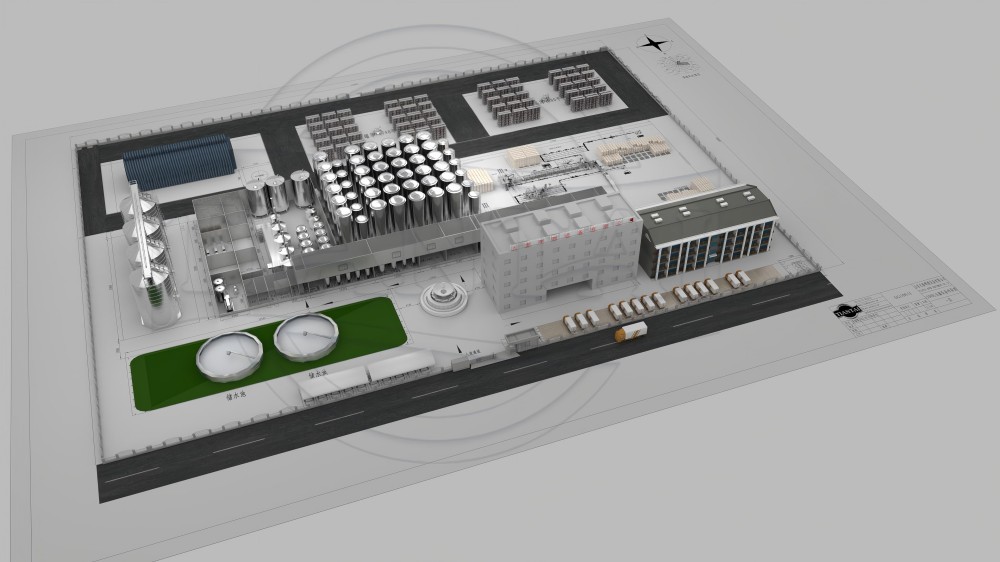Beer fermentation generally takes 5 to 10 days as a cycle. The brewing process of beer mainly includes three processes: saccharification, fermentation, and aging after storage. The fermentation process is to add yeast to the cooled wort and send it to a fermenter or a cylindrical and conical bottom fermenter for fermentation, and use coils or jackets to cool and control the temperature. During the following fermentation, the maximum temperature is controlled at 8-13C. The fermentation process is divided into foaming period, high-foaming period and low-foaming period, generally fermenting for 5-10 days. The fermented beer is called tender beer, which has a rough taste and low CO2 content, so it is not suitable for drinking.

Craft beer brewed by craft beer equipment can be divided into top fermentation and bottom fermentation in terms of fermentation methods, ale with yeast fermenting on the top of the fermenter, and lager with yeast fermenting at the bottom of the fermenter.
Fermentation temperature
The upper fermentation temperature is higher at 10-20 degrees and the fermentation time is longer, generally ranging from 7-20 days, while the lower fermentation temperature is lower than 10 degrees and the fermentation time is shorter. Most industrial lagers are 3-7 days . Therefore, lager beer accounts for more than 80% of the existing market sales. After all, the shorter the fermentation time, the more conducive to large-scale industrial production. Brewing one bottle of ale in the same time can brew multiple bottles of lager. The fermentation process of craft beer equipment is mainly 10-20 degrees fermentation.
Fermentation time
The fermentation time is about 7-20 days, and the fermentation period of some German beer manor beer is 28 days. In this way, the beer is fermented slowly at low temperature, the taste is softer, the aroma is longer, and the foam is richer. Craft beer is a kind of high-end beer, which is often sold in some high-end star-rated hotels. Intelligent operation is simple and convenient. Craft beer equipment is a kind of equipment that integrates intelligent automatic operating system. The user only needs to prepare the wine quality in the wine barrel, and carry out the corresponding program design to complete the wine operation conveniently. Because it is intelligently operated, it can properly control the different environments and can ensure the quality of the whole wine to a very high level.
Pre-fermentation
After the wort (7-8掳C) inserted into the yeast enters the pre-fermentation, the yeast can start to grow and reproduce after several hours of growth zone lagging period, when the cell concentration reaches 2脳107 cells/ML. The surface of the wort begins to bubble, this stage is called pre-fermentation. The pre-fermentation time varies with the inoculation temperature and inoculum size. The low temperature fermentation is about 16-20h, and the medium temperature fermentation is 12-14h. In the pre-fermentation stage, the yeast lowers sugar slowly, and the temperature of the fermentation liquid will naturally rise by 0.6-1.0掳C due to the metabolism of the yeast. After the pre-fermentation is over, the fermentation liquid is poured into the main fermentation room.
Post-fermentation
Post-fermentation is also called wine storage. Its purpose is to complete the final fermentation of residual sugar, increase the stability of beer, fully fill with CO2, fully precipitate protein, and clarify the wine. Eliminate diacetyl, aldehydes, H2S and other tender wine smells to promote maturation; keep the wine in a reduced state as much as possible to reduce the oxygen content. After the main fermentation, the wine liquid is still not mature enough, and some extracts need to be fermented. Especially for the production of light beer, the content of fermentable sugar should be reduced as much as possible. In the main fermentation stage, carbon dioxide is exhausted or recovered, so that the carbon dioxide content in the liquor is insufficient, which requires post-fermentation to saturate the carbon dioxide contained in the beer. Volatile substances produced by the main fermentation such as diacetyl, hydrogen sulfide, etc. are also reduced to the specified range through post-fermentation and wine storage liquid. In addition, the yeast coagulation and sedimentation suspended in the wine liquid and the precipitation of the precipitated substances in the fermentation liquid are also completed in the post-fermentation and wine storage process.


.jpg)





Get A Quote